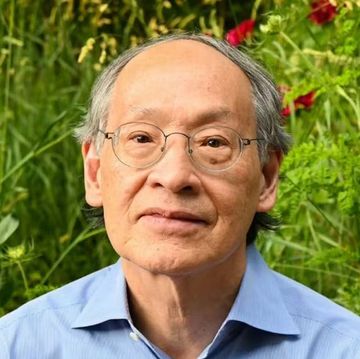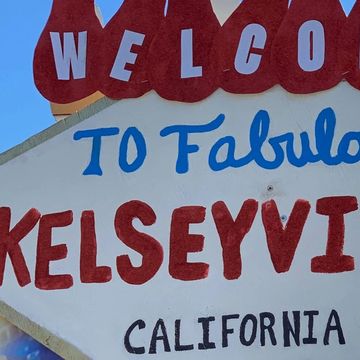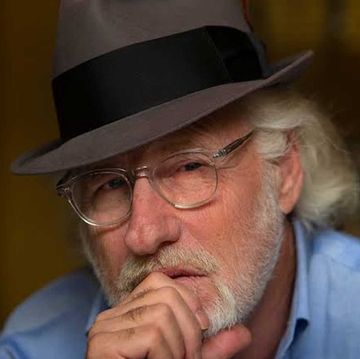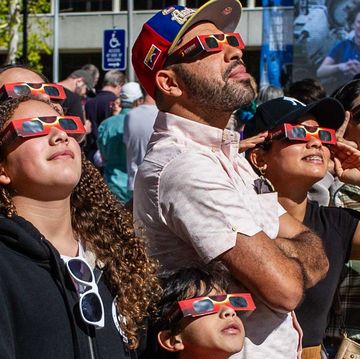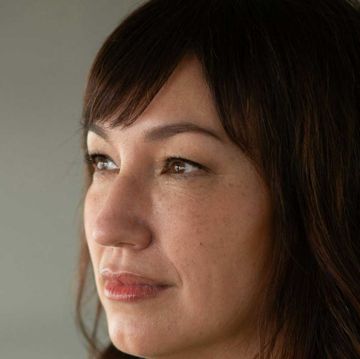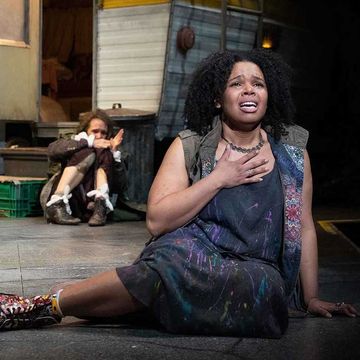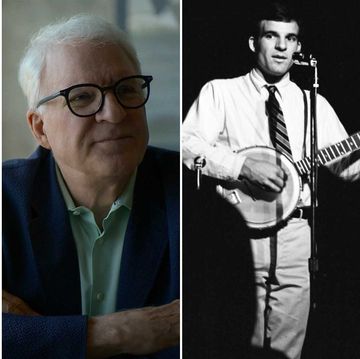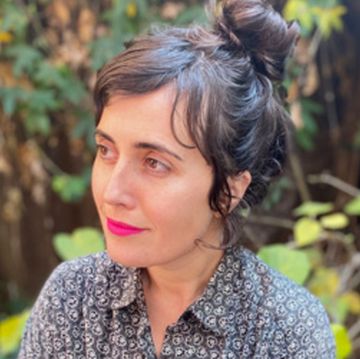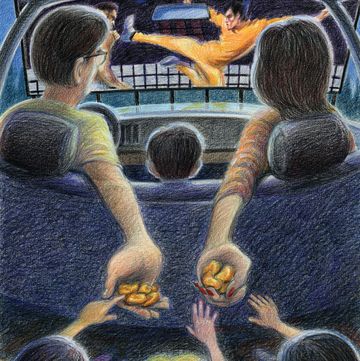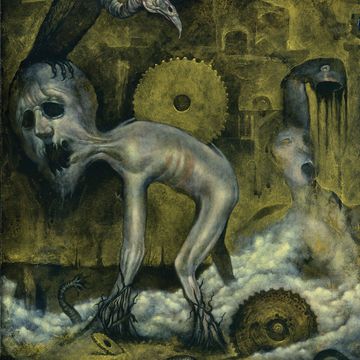Over the past four decades, architect Michael Lehrer has designed striking modernist structures across Southern California, from an event space where people can tie the knot behind 29-foot-high glass doors (the Katz Family Pavilion at Stephen Wise Temple) to the world’s first LEED Platinum museum, anchored by 10 steel towers, where visitors can learn about water conservation in the desert (the Water + Life Museum in Hemet). His work has earned him scores of awards, including a 2020 Gold Medal from the American Institute of Architects Los Angeles.
For much of his career, however, Lehrer has served a specific clientele: houseless people in Los Angeles. Lehrer Architects LA has now crafted five tiny-home villages to help address the city’s exploding crisis of homelessness. Built on oddly shaped plots of unused land—an isolated stretch of park in North Hollywood, say, or an abandoned parcel in Echo Park—the temporary living spaces provide shelter, safety, and a sense of community for hundreds of L.A.’s neediest individuals.
A native of the city and a board member and past president of Homeless Healthcare Los Angeles, Lehrer, who is 69, is a longtime advocate for unhoused people. He speaks proudly of the Downtown Homeless Drop-In Center he designed in Skid Row in 1998, eschewing the gray concrete and institutional feel of many such shelters in favor of white treillage and a foliage-filled courtyard awash in natural light. Like that early center, Lehrer’s tiny-home villages, with their clean lines and vibrant hues, are things of beauty, whether viewed from street level or the sky. “If they’re places of desire, and even a little beautiful,” he says, “you destigmatize the places, and you destigmatize the people.” In his Silver Lake headquarters, Lehrer spoke about the joys and challenges of creating tiny-home villages, why they work so well in L.A., and what he says to the naysayers.
This interview appears in Issue 24 of Alta Journal.
SUBSCRIBE
You’ve designed community centers and park pools, private residences and places of worship. What’s the appeal of tiny homes?
Well, first of all, they’re darn cute. They’re somewhere between a sugar cube and a Monopoly house. Usually a child’s drawing of a house will have a steeper gable, but they’ve got the gable, they’ve got the door, they’ve got the four square windows. So: essence of house.
The shapes of the plots seem like they would be a challenge.
Most of the sites are weirdly shaped. Some are extremely weirdly shaped.
Are there plot shapes that don’t work?
Well, I mean, the truism is, of course there are. One of the amazing things about some of the sites we did is that they don’t look like viable sites. The Saticoy-Whitsett project [the Whitsett West Tiny Home Village, which opened in 2021] is 1,000 feet long and L-shaped. And the long part against the freeway is between the top of the slope to the freeway and the warehouse against the freeway.
Do those shapes make things more fun or less fun?
Those are very satisfying projects to do. One of the missions of the architect, and probably a good mission in life and in dealing with people, is turning shit into gold. When you see something that has no value or little value and then you imbue it with value. That’s just a good thing to do in life.
Color plays a big part in your design.
We use color a lot, because in the scheme of things, it’s really inexpensive, and it’s high-impact. You start with the primaries and secondaries. Whether that’s going back to early-20th-century modernism, Mondrian or Fernand Léger, or the Russian constructivists. Red and yellow are reliable colors to highlight certain things, to give a little bit of kick when you need it.
At Chandler [the Chandler Boulevard Bridge Home Village, which opened in 2021], to emphasize the individuality of the units, in the middle of maybe 15 or 20 tiny homes, 3 of them are painted red. Those are aesthetic choices: How do you give something a knowable, perceivable form? How do you establish a sense of place? How do you use color in a way that it has the maximum impact, where the color might reflect onto a white unit and give it a softer look?
Yes, there is also a lot of white. Why’s that?
White walls capture the blue of shade and the warm color of sunlight and maybe even reflect the landscape. And in subtle ways, I mean, it just makes you feel good.
What advantages do these tiny homes have over more traditional shelters, where you might have several people living in one big room?
You have privacy; you have space for a bed and space for a desk. Among the biggest things is that you can lock the door. That’s a major deal. And you have heating and air-conditioning. You have a place to bathe and reliable meals.
When you live on the street, though, you have autonomy. You might have a tent filled with your own stuff. That’s not trivial. What you don’t have is a place to bathe or go to the bathroom. But one of the things which is really counterintuitive, I think, to people who have no experience with this is that someone can be in a tiny-home village, they’re secure and have heating and air-conditioning, they can have their audiovisual stuff in their place, but they might still yearn to be with their buddies on the street. And why is that? Because they’re human beings. I mean, human beings are human beings are human beings. We’re social animals.
What do people misunderstand about the villages?
I’ve heard the word used: carceral. I guess it’s some form of the word incarcerate. If you live there, you can come in and out, but not everybody can come in. They serve three meals a day, so they’re somewhat regimented. And they have rules, which I suspect are enforced to differing degrees.
And I think the fact that we’ve made places look respectable and even a little nice, then people think we’re sugarcoating. We’re taking these tough, terrible places and making them look palatable. Well, yeah, we actually want to make them palatable; we want to make shelter palatable.
Are these kinds of projects particularly well suited for L.A.?
I’m not sure that L.A. is significantly worse than other major cities of its scale. I actually think our climate is probably the single most defining attribute of our culture. So yes, climate makes a difference. It makes a difference whether you’re houseless or whether you’re rich. Our climate cuts us a lot of slack.
One of the things that makes Los Angeles a culturally important and rich place is that it’s full of beauty and it’s full of ugliness. If you took the ugliness out of L.A., it probably would be a lot less interesting and important culturally. I mean, look, San Francisco is incredibly important in business and in culture, but it’s not ugly. It’s quite smug about a lot of things. It’s hard to get too smug in L.A. We have real beauty, and we have real ugly, and ugly is liberating. It’s really hard to make something that’s truly shocking here, so I can push the envelope, right?
It’s hard to make something here that would stand out for its ugliness.
That’s right. And that’s liberating. I think there’s just a general openness and nonchalance and ease here. I don’t think we’re a very self-aware, self-conscious culture. In some ways, that’s a little bit of a problem, but it’s also largely a virtue.
This might seem like a counterintuitive question, but who are these places for?
As I see it, there’s basically three audiences. There are the people who have been on the street and who are now in this transitional shelter. You want a place that, even if we did nothing to embellish the campus, you give them shelter. But you also want to create a place where they come in and say, “Oh, this is special.” Human beings get it when something is special. It doesn’t matter who they are, whether they’re living on the street or living in fancy homes. When you see something is made with care and love and intention and, by the way, it’s for you, you think, I exist as a human being. My humanity is being respected.
The second audience is the neighborhoods that these are in. The least you want to do is to be benign, as opposed to ugly, and at best you want to somehow or other, if you can, enhance the neighborhood—that’s really the best. Because those are the people who will say no.
And the third audience is the culture at large. That’s the largest audience, and I do believe that our projects have been instrumental in changing the conversation and perception of what houseless shelters around the city can be. It’s an answer to the problem. It’s an answer. And we need endless answers. But as an answer, it’s an interesting and viable one.•
TINY-HOME VILLAGES
Lehrer Architects LA has designed five villages in Los Angeles, which can house, in total, upwards of 600 people. Each village features:
- Dining areas
- Pet parks
- Showers and restrooms
The homes are eight-by-eight-foot prefab structures. Each home features:
- Heat and air-conditioning
- A bed and a desk
- Lockable doors
Robert Ito is a journalist based in Los Angeles. He writes about film, television, and theater for the New York Times.





